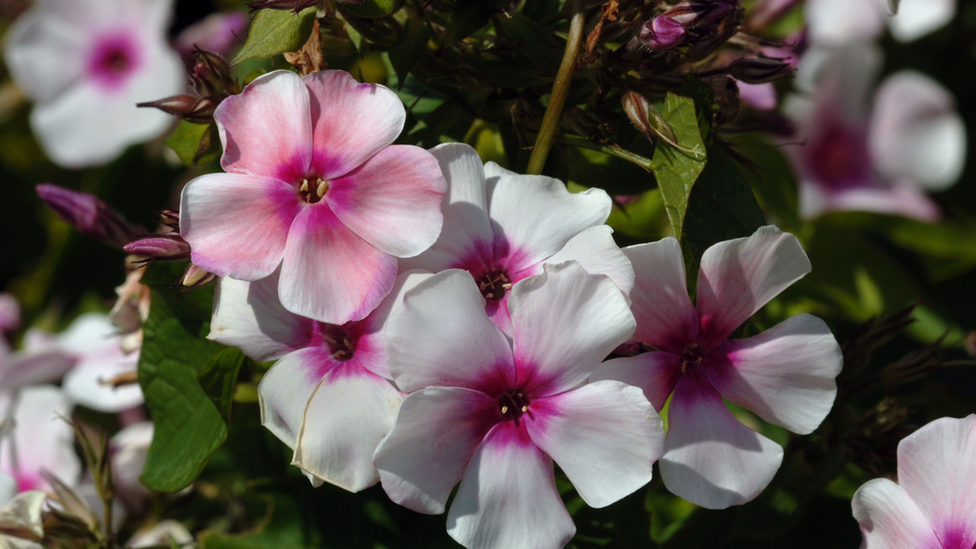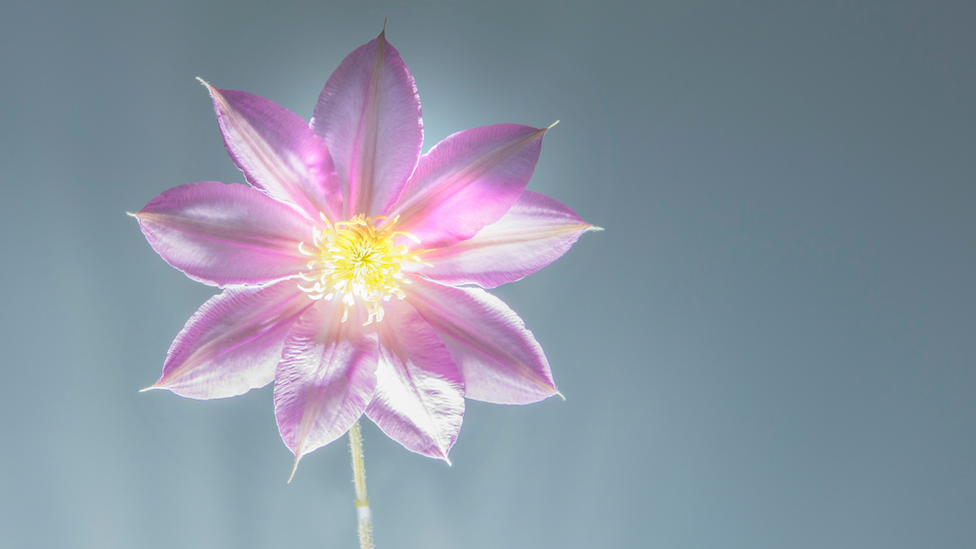Flower power: How plants bounce back after crushing blows
- Published

A busy lizzie, an example of a flower able to recover quickly from being trampled on
Some flowers can recover with remarkable speed after a major accident, such as being walked upon by humans.
Scientists found that species including orchid and sweet pea could re-orient themselves in 10-48 hours after an injury
These plants are able to bend, twist and reposition their stems to ensure that they reproduce.
But others such as buttercups fail to bounce back after damage.
The remarkable abilities of some flowers to recover quickly from serious injury, have been previously overlooked by science, say the authors of this new work.

A clematis flower, which doesn't recover quickly from injury
Researchers looked at 23 native and cultivated flower species in the UK, Europe, Australia and North and South America.
They examined species which had suffered accidents and they also carried out experiments where the flowers were tethered at either 45 or 90 degrees off their normal orientation.
For many flowers, their ability to reproduce depends on the careful alignment of their sexual organs or stigma and their nectar tubes in order for a visiting pollinator to help them make seeds.
The scientists found that when these species were damaged, they could accurately reposition their sexual organs.
"The common spotted orchid does it largely by just bending the main stem," said Prof Scott Armbruster from the University of Portsmouth who led the research.
"It's pretty quick, within a day or two, it's reoriented its main stem so that now all the flowers are in the right position," he told BBC News.
"The slightly more interesting ones were where each individual flower re-orients on its own, by the sub stem, that's what's called the pedicel connecting the flower to the main stem, and that is bending or twisting. And that's what you see with aconitum."
These rapid recovering species were usually bilaterally symmetrical flowers, which is where the left and right hand sides mirror each other. Examples of these types of flowers include snapdragon, orchid and sweet pea.

A bilaterally symmetrical orchid, one of the flowers capable of bouncing back quickly from an injury
Other species, termed radially symmetrical, such as sunflower, petunia, buttercup and wild rose have far fewer abilities to bounce back. Even if they lose their orientation, they are still capable of reproducing.
"The ones that do it are the ones where it matters. And the ones that don't do it are the ones where it doesn't really matter," said Prof Armbruster.
"The radially symmetrical flowers like clematis had a nice radially symmetrical flower. And the same with passion flower, and they don't bounce back. We tether them and they just stay there or they might change position but not in a way that corrects their position."
The research has been published, external in the journal New Phytologist.
Follow Matt on Twitter @mattmcgrathbbc, external.